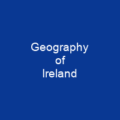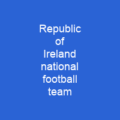Ireland: A Land of Rich History and Culture
Imagine a land where history whispers through the winds and culture dances under the stars—welcome to Ireland, a place where ancient myths intertwine with modern realities. Is this not the perfect setting for a tale that spans centuries?
The Geography of a Nation
Ireland is an island in the North Atlantic Ocean, separated from Great Britain by the Irish Sea and St George’s Channel. It’s the second-largest island of the British Isles, with its geography characterized by low-lying mountains surrounding a central plain. The lush greenery that blankets this land is a testament to its mild but changeable climate, moderated by the Atlantic Ocean.
Geologically, Ireland boasts varied provinces—metamorphic, igneous, and sedimentary rocks. Its flora is abundant with native species like deciduous and evergreen trees, while its fauna includes 55 mammal species. The island’s rich biodiversity is a marvel of nature, but it faces challenges from modern agricultural practices that threaten these natural treasures.
A Nation Divided
Ireland is divided into two political entities: the Republic of Ireland and Northern Ireland. The Republic covers five-sixths of the island and is a sovereign state, while Northern Ireland remains part of the United Kingdom. This division has shaped the nation’s history, politics, and culture in profound ways.
The History of a Nation
From the 1st century AD when Gaelic Ireland emerged, to the Viking raids that reshaped the landscape, and through the tumultuous periods of English rule and the struggle for independence—each era has left its mark on this land. The partition in the early 20th century led to the creation of the Irish Free State, which declared itself a republic in 1948.
The Good Friday Agreement of 1998 brought an end to decades of conflict and violence, paving the way for peace and stability. Today, Ireland is one of the wealthiest countries globally, with its capital Dublin ranking among the top cities in terms of GDP per capita.
Modern Ireland: A Nation on the Move
The Republic of Ireland has experienced rapid economic expansion since 1995, earning it the nickname ‘Celtic Tiger.’ However, this growth was followed by a significant financial crisis in 2008 that led to deep recession and high unemployment. Despite these challenges, Ireland remains committed to innovation and sustainable development.
While Northern Ireland continues to navigate its unique political landscape, both regions share a rich cultural heritage. From the vibrant arts scene to the thriving sports culture, Ireland is a nation in constant motion, evolving with each passing day.
Cultural Riches
Ireland’s cultural tapestry is woven from threads of Gaelic tradition and modern influences. The Irish language, English, and various minority languages like Shelta and Irish Sign Language coexist here. Literature, music, and visual arts are celebrated through institutions like the Abbey Theatre and the National Gallery.
Music in Ireland dates back to prehistoric times, with genres ranging from traditional ballads to contemporary rock. The country’s literary giants include Jonathan Swift, Oscar Wilde, and Seamus Heaney, whose works continue to resonate worldwide.
Sports and Beyond
Ireland is a nation that loves its sports. Gaelic football reigns supreme in terms of community involvement, while soccer enjoys widespread popularity. The island fields a single international team for most sports but has produced world champions in boxing and snooker.
From the rugged landscapes perfect for surfing to the rich history of horse racing, Ireland offers something for every sport enthusiast. Its athletes have brought home numerous medals, particularly in boxing, making it one of the most successful nations at the Olympics.
Culinary Delights
Ireland’s cuisine is a blend of traditional and modern influences. Potatoes, introduced in the 16th century, became a staple food, while the ‘New Irish Cuisine’ of the 20th century incorporated international flavors with local ingredients.
Regional dishes like coddle, drisheen, and blaa are beloved throughout the country, reflecting the diverse culinary heritage that Ireland is proud to share. The island’s whiskey tradition, once dominant globally, has seen a resurgence in recent years, with brands like Guinness and Baileys gaining international acclaim.
Conclusion
Ireland is a land of contrasts—where ancient myths meet modern realities, where history whispers through the winds, and culture dances under the stars. From its rich geography to its vibrant cultural heritage, Ireland offers a unique blend that makes it one of the most fascinating places on Earth.

You want to know more about Ireland?
This page is based on the article Ireland published in Wikipedia (retrieved on March 11, 2025) and was automatically summarized using artificial intelligence.







